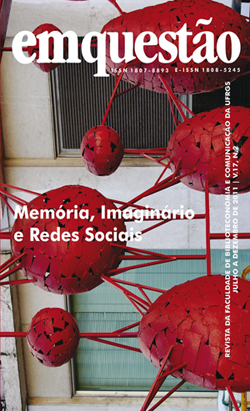Productive representation of the programs of postgraduate in Librarianship and Information Science in Brazil: visibility in the databases and aspects of the Curriculum Lattes of the researches
Keywords:
Scientific visibility, Curriculum Lattes, Bibliometry studies, Librarianship and Information Science - Brazil.Abstract
It is analyzed the production of the main Brazilian authors in Librarianship and Information Science from 1995 to 2004, to verify the scientific behave in the aspect of visibility on reviews which the researchers has been published and the productions through no conventional means of publicizing on metric study system (books, books chapters and congress documents). The methodology has been based on selecting information through the databases (SciELO, SSCI, Francis and LISA), according to the information gotten from the Curriculum Lattes of the researchers. The data received turned into a .txt format and after that, exported to a database and to data sheets. For the results, we detach that the universities from the southwest of Brazil had the best reports. The reviews searched the most by the writers were Ciência da Informação, DataGramaZero, Transinformação and Perspectiva em Ciência da Informação; for the congress documents searched the most by the authors they had been Enancib and CBBD.Downloads
Downloads
Published
How to Cite
Issue
Section
License
Copyright (c) 2010 Adilson Luiz Pinto, José Antonio Moreiro González

This work is licensed under a Creative Commons Attribution 4.0 International License.
Authors who publish with this journal agree to the following terms:
Authors will keep their copyright and grant the journal with the right of first publication, the work licensed under License Creative Commons Attribution (CC BY 4.0), which allows for the sharing of work and the recognition of authorship.
Authors can take on additional contracts separately for non-exclusive distribution of the version of the work published in this journal, such as publishing in an institutional repository, acknowledging its initial publication in this journal.
The articles are open access and free. In accordance with the license, you must give appropriate credit, provide a link to the license, and indicate if changes were made. You may not apply legal terms or technological measures that legally restrict others from doing anything the license permits.









